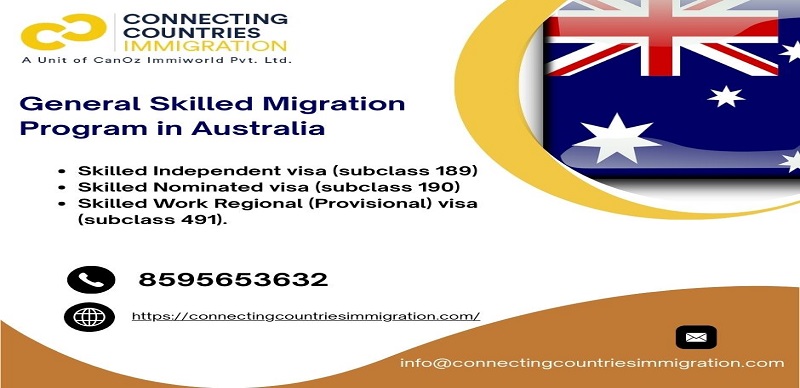If you’re dreaming about building a successful career overseas, Australia might just be the perfect destination. With its high standard of living, excellent healthcare system, and booming job market, it’s no wonder so many skilled professionals want to migrate to Australia. One of the most popular ways to achieve this goal is through the Australia General Skilled Migration (GSM) program.
In this blog post, we’ll break down what the GSM program is, how it works, and how it can help you secure an Australia PR visa.
Understanding the Australia General Skilled Migration Program
The Australia General Skilled Migration program is designed to attract highly skilled workers from across the globe to fill shortages in the Australian labor market. It offers a pathway for qualified individuals to live and work permanently in Australia without requiring employer sponsorship.
The GSM program is points-tested, meaning applicants are awarded points based on factors like age, education, work experience, English language ability, and more. The higher your score, the better your chances of receiving an invitation to apply for a visa.
Key Visa Categories under the GSM Program
The GSM program mainly includes three visa subclasses:
Skilled Independent Visa (Subclass 189):
This visa is for skilled workers who do not need sponsorship by a state, territory, or employer. It grants full permanent residency rights.
Skilled Nominated Visa (Subclass 190):
If you are nominated by an Australian state or territory government, you can apply for this visa. It also leads directly to permanent residency.
Skilled Work Regional (Provisional) Visa (Subclass 491):
This visa is for those willing to live and work in designated regional areas of Australia. After meeting certain conditions, holders can apply for permanent residency.
How to Apply for the GSM Program
Here’s a quick overview of the application process:
Check Your Occupation:
Your occupation must be on the relevant skilled occupation list.
Assess Your Skills:
You’ll need a positive skills assessment from a recognized authority.
Take an English Language Test:
IELTS, PTE, or TOEFL scores are usually required.
Submit an Expression of Interest (EOI):
You must lodge an EOI through SkillSelect, Australia’s online immigration system.
Receive an Invitation to Apply:
If your points are competitive, you may receive an invitation to apply for the visa.
Lodge Your Visa Application:
Submit all required documents and pay the applicable fees.
Get Your Australia PR Visa:
Once approved, you’ll be granted an Australia PR visa with full rights to live, work, and study in Australia.
Why Choose the GSM Pathway?
The GSM pathway is one of the most flexible and independent ways to migrate to Australia. Unlike employer-sponsored visas, you are not tied to a specific job or location (except in some regional visas). Plus, it offers:
- A direct route to permanent residency
- Access to Medicare (Australia’s healthcare system)
- Freedom to work and study anywhere in Australia
- The ability to sponsor eligible family members
Final Thoughts
The Australia General Skilled Migration program offers a fantastic opportunity for talented individuals to start a new life in one of the world’s most dynamic and welcoming countries. Whether you’re an engineer, IT professional, healthcare worker, or tradesperson, your skills could be your ticket to a bright future Down Under.
If you’re serious about migrating to Australia, now is the time to start gathering your documents, improving your English skills, and preparing your Expression of Interest. Your Australia PR visa could be closer than you think! Contact us today at info@connectingcountriesimmigration.com or call us 8595653632 for a FREE Assessment!



